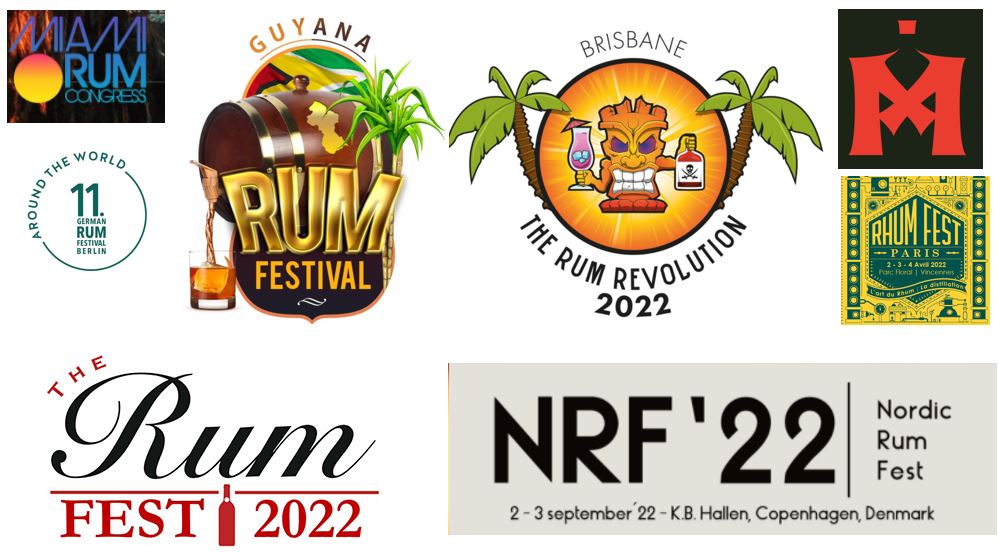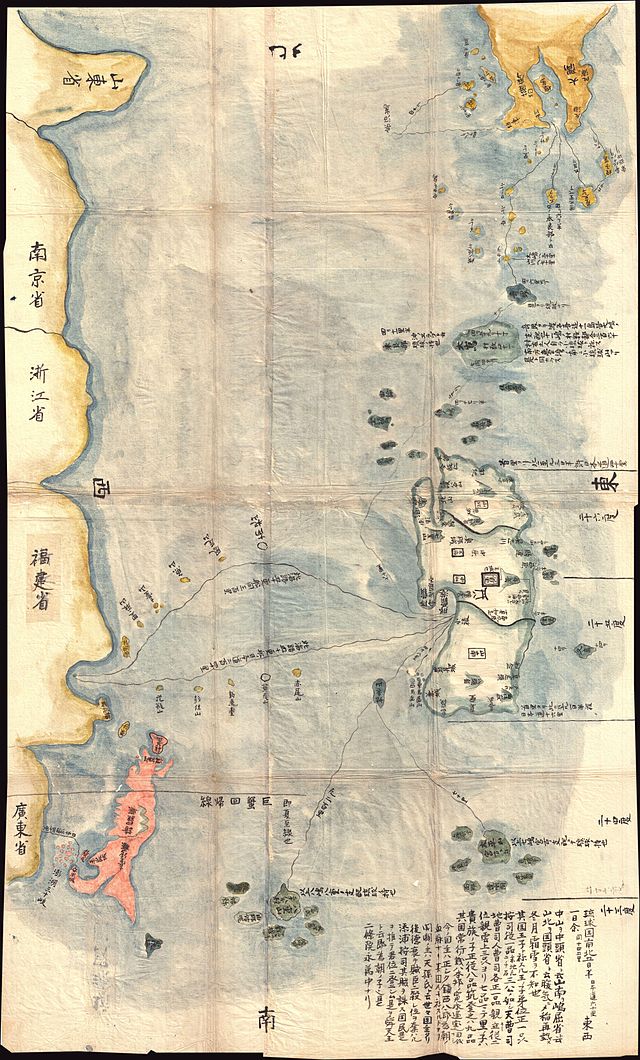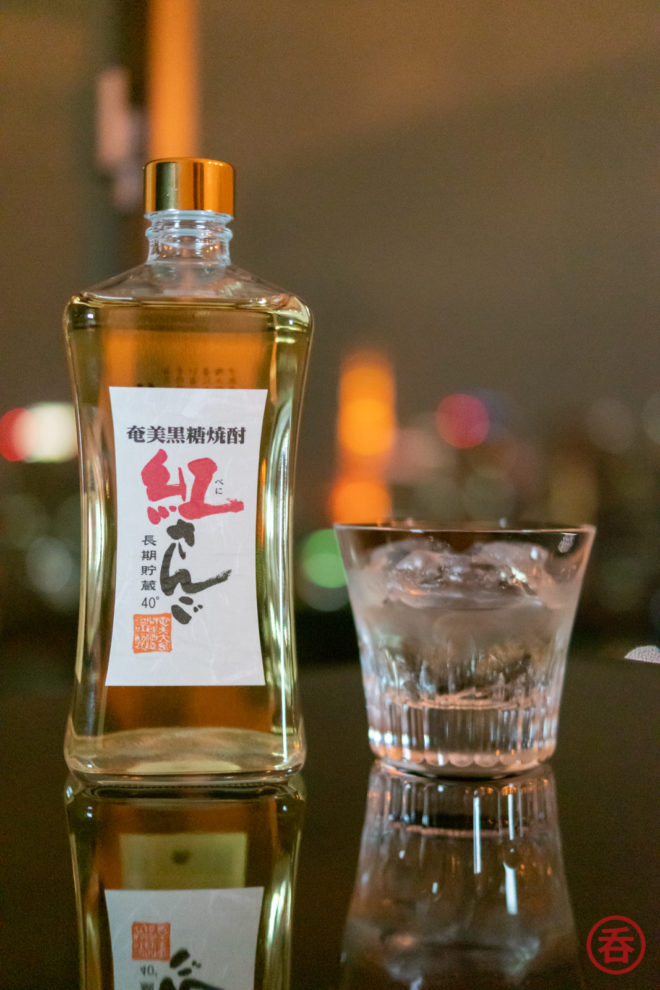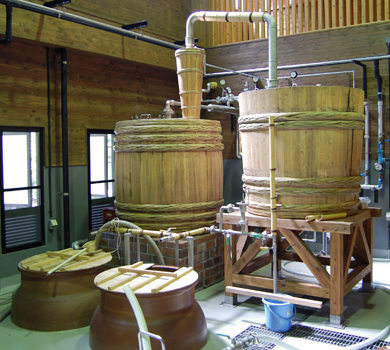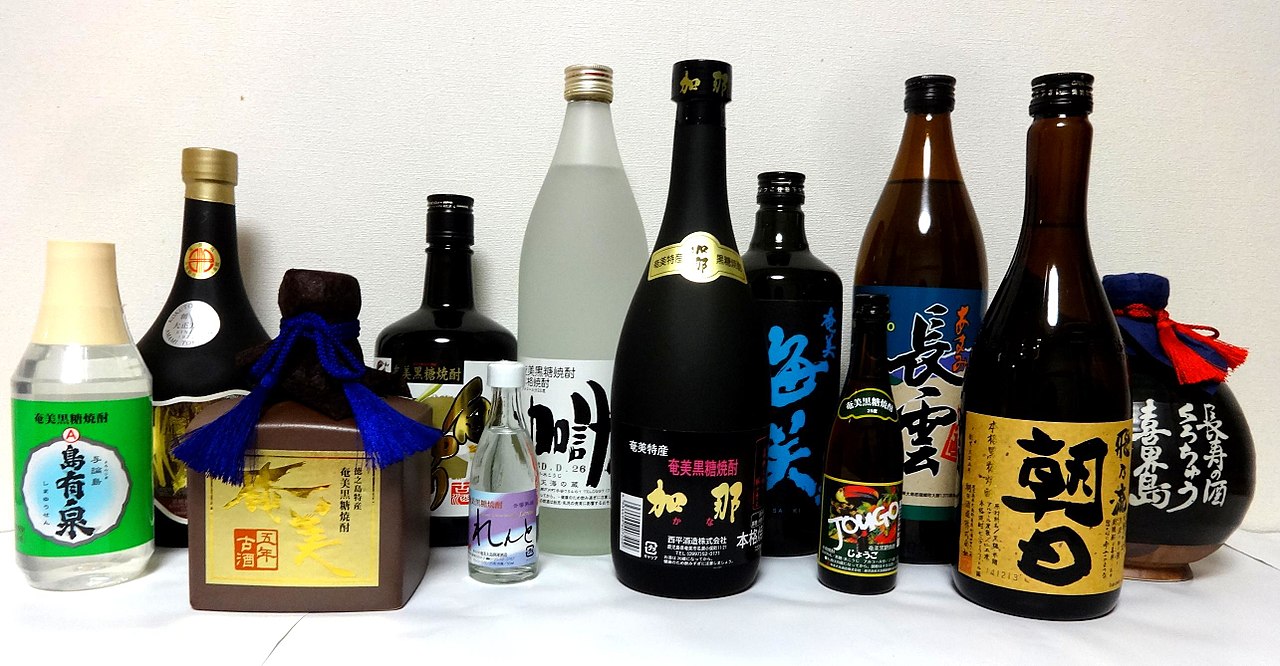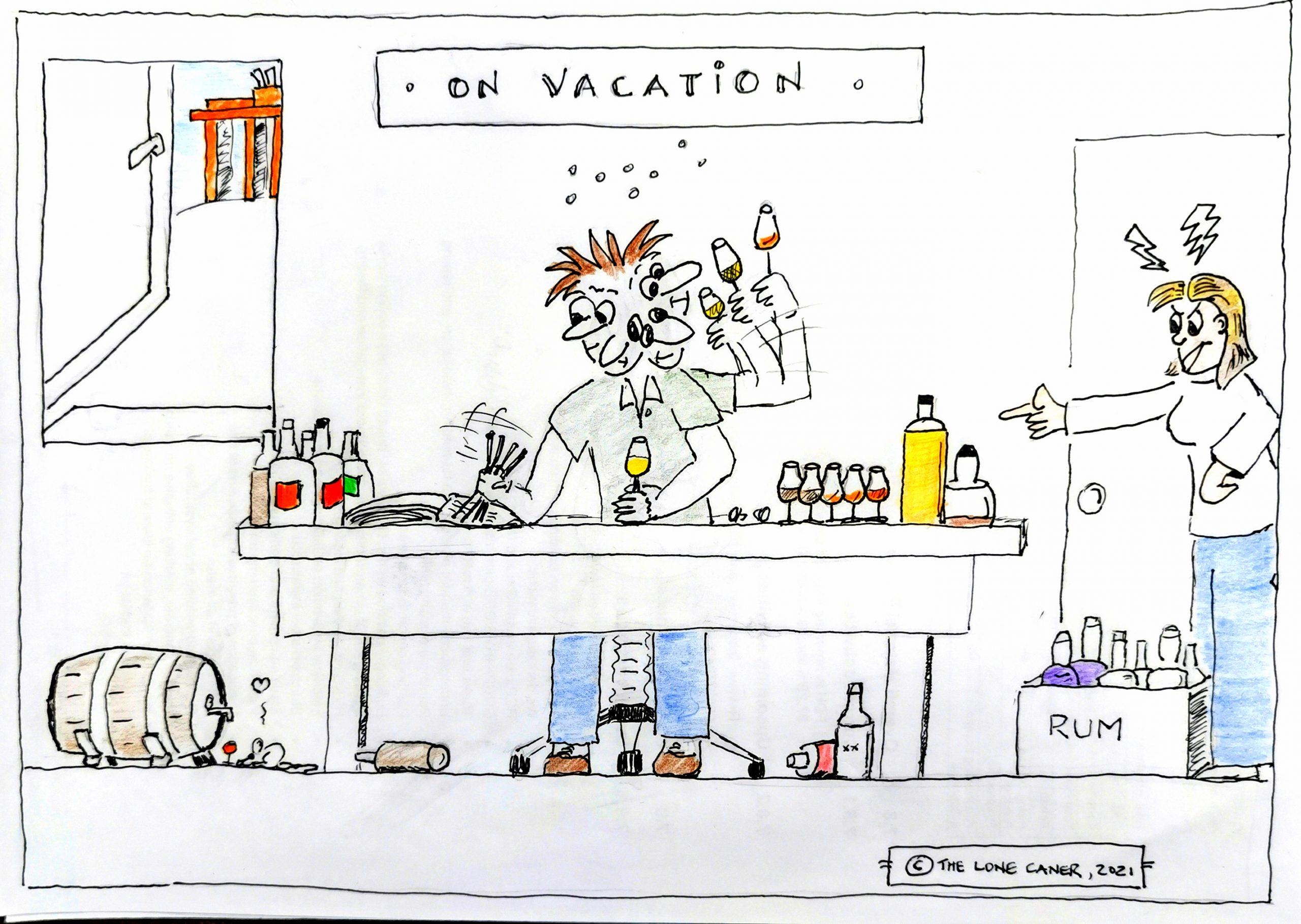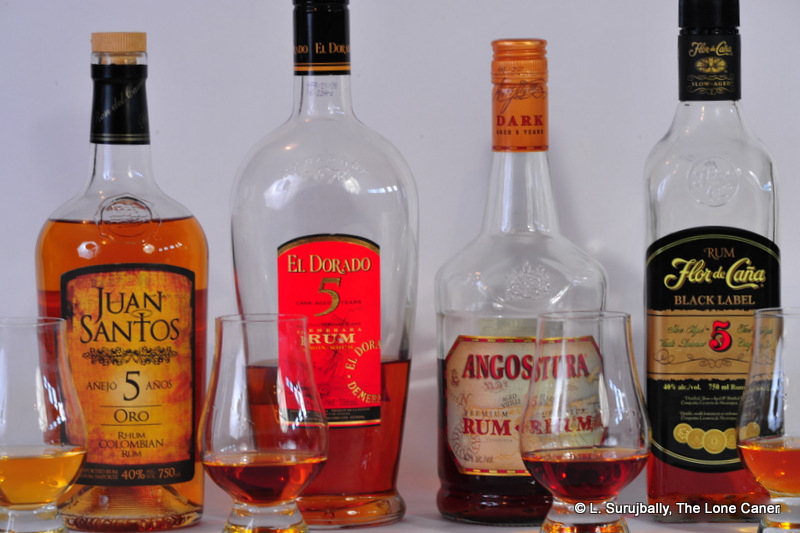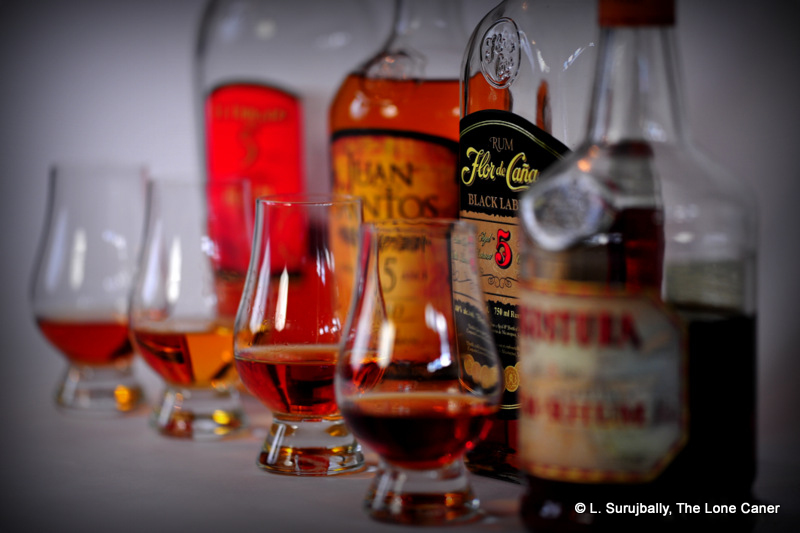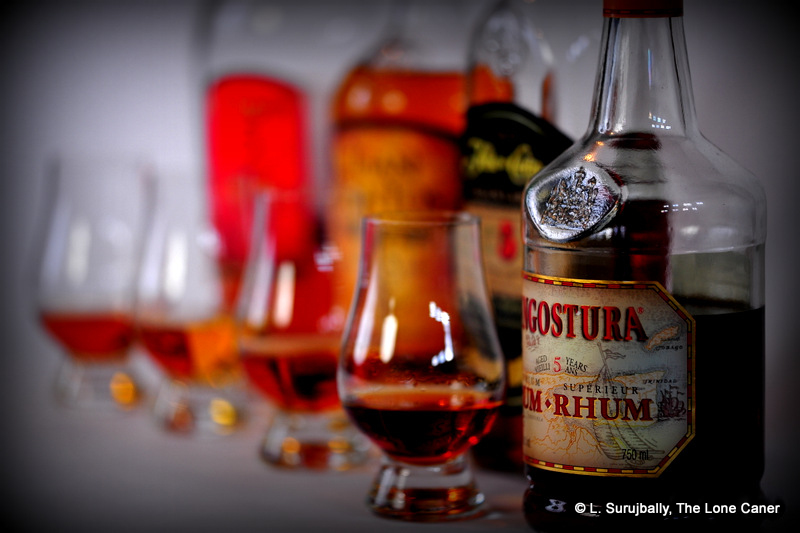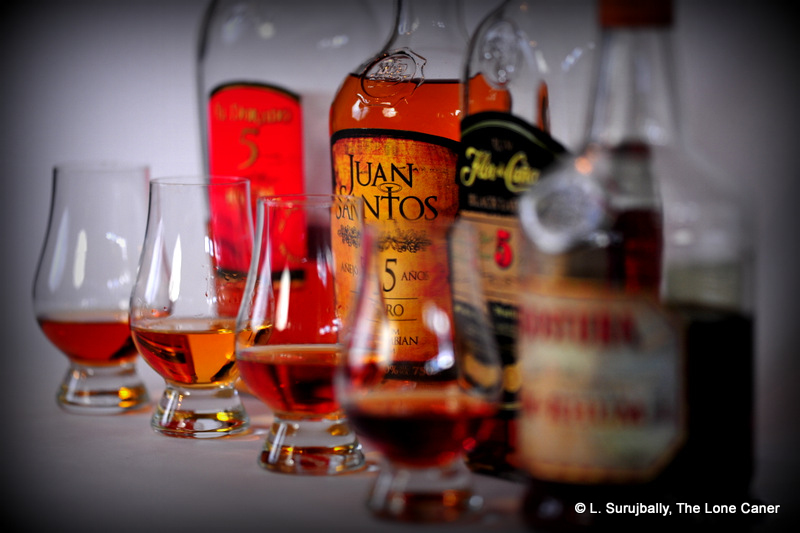
Speaking from my solitary spot in the rumiverse, 2023 was in many ways a year of challenges and changes and oddly enough, also of maintaining the status quo and holding the line. It was an exciting year with many new experiences and many new rums, and while I could not attend quite as many festivals as I might have preferred — or met as many friends, colleagues, aficionados and rum people as I wanted to — in many respects the year was a success on other levels and I really can’t complain except for one thing: I didn’t get to taste enough, or write enough. All this while the rum world was expanding and generating ever more new and fascinating branches and going in some interesting directions.
So here’s my observations on the state of the rumiverse, and my commentary on emerging trends and some interesting issues that popped up over the year.
Personal
For those who know something of my vagabond nomadic existence, the big event of 2023 was that after ten years living and working abroad, I returned with my family to Canada, leaving behind a stash of rums in Europe which — in spite of much begging, pleading, negotiating or even outright conniving — had to stay there because the duties and tax levied on shipping such a huge collection were simply unaffordable. One of these days I’ll figure out what to do with it, I guess.
Happily, the decade away showed me that at least Alberta (if not other provinces) began to get a pretty good rum selection, often from abroad but also from Canadian producers. Admittedly we get only the most occasional Velier rum, and none of the Foursquare ECS series; most of the indies are absent, agricole availability remains weak and juice from the Far East, Taiwan or Australia are wistful daydreams; but enough distillery and independent bottlings are now being seen that one can reasonably pick up a cask strength rum from Canada, Europe, the Caribbean, South America, Japan, and even the odd American edition, with some sleuthing…a high point for me was finding the Japanese Teeda 21 YO, for example.
On the flip side, what with trying to get professional, family and social life back into order, it made writing harder; a lot of that was just finding the time and energy to keep it up. The level of written output maintained for so many years – two reviews a week, essays, opinion pieces, articles and what have you – declined, and so for 2023 I only wrote 86 reviews (vs 88 the year before) even though I travelled less; wrote no published opinions (though quite a few unpublished ones), made no new lists, posted no essays. The Key Rums and Makers series languished somewhat for lack of time to do the deep dives they require: they limped along. And there were at least regular updates to several reference posts which I like keeping an eye on: the Strongest Rums of the World, the Guide to Online Resources and the Annual Global Rumfest Schedule, all of which I think are really useful, and which should not be left to become dated. I remained active on Reddit and posted a few longform comments, but let’s face it — the reduction in output was marked. This was and is frustrating because there are a lot of things I want to research and document more deeply, and the hope is that in 2024 as things settle down I can resume a better output and address these.

Other stuff
Being able to interact with people in an environment where alcohol was not illegal — which is to say, outside of a rum festival environment – was also something I had not realised I missed so much during years of enforced teetotalling. People could actually come over and taste with me. I could attend a tasting, and get a bit of a buzz on, talk to interesting people, meet new ones. The New Renegade tasting run by Jane Nurse at Willow Park was a great evening, and I reconnected with all the fun people at Kensington Wine Market (especially when they had a rum tasting of their own). Mitch Wilson passed through on his world tour, and I attended his Black Tot session in Edmonton; I met Karl Mudzamba of Bira! when he came to Calgary and had an awesome afternoon riffing about the subject with him and some friends. And having Logan, Dwayne, Carter and Neil come over to share their finds and damage my shelf on a weekend afternoon was just a great experience. That said, the store people at major emporia almost totally ignore this category and know little about it, nobody outside the extremely small circle of rumdorks in Western Canada has a clue that there even is such a reviewer as the ‘Caner, and so the obscurity that I began with has come full circle. C’est la vie.

Mitch of Black Tot and the Krzysiek (the Rum Explorer), Berlin 2023, on the cruise….
With respect to rum festivals, well, those had to be chosen carefully and it was with real regret that I passed on Paris for their major events in March and October and had to limit things to the TWE and German rum shows, which was a decision driven by their being a week apart so attending both was feasible. They were great though: going on a nighttime rum cruise in Berlin with Matt & Carrie, Mitch, the Colours of Rum crowd, the Rum Explorer and Mrs. Caner was an event of which I will retain fond memories; I met up with Alex of the Rum Barrel, Steve Magarry from Oz, Dawn Davies, Dirk Becker, Pete Holland, the Skylark boys, Kris Van S., the UK rum-loving crowd, and of course the UK rum-making crowd from all those amazing little distilleries up and down the country. Overall, I just had a lot of fun walking around and talking to people.
Unsurprisingly, my new location almost demanded that my focus on which rums to review be shifted again, as they already have several times. My desire to try more rums from Australia was temporarily sated (though I look forward with real eagerness to writing about the 2023 Advent Calendar), and I have a backlog of rums from new distilleries from the UK to write about. I lack access to the best of the newest that’s out there – in that respect Canada has not really changed – but on the flip side this leaves me free to spend some time looking at what Canada itself has to offer. For the most part, my initial forays have proved uninspiring – especially among the white rums – but there are glimmers of light in the darkness. Romero and Ironworks demonstrated real quality, for example, and I know there are others to be found and written about.
 Passing 1,000
Passing 1,000
Another event of some note was, of course, that the ‘Caner finally hit that once-unthinkable milestone of the 1,000th review. You have to understand what that meant to a guy who, when he started, once thought that making it to a hundred was cool beans…and didn’t even think there were a thousand rums to taste (let alone that they could be sourced). I’m not the first to get there – Serge Valentin was and remains way ahead (as I write this in the final days of 2023 he’s closing fast on 2000 rum entries) and I’m of the firm opinion that had Wes Burgin (The Fat Rum Pirate) not taken a leave of absence from the reviewing gig he would have gotten to that stat next since he wrote and posted fast and more often. But you’ll forgive me for being just a little proud of the accomplishment. The enormous catalogue of essay-length reviews, none of which was phoned in or just dashed off, all of which I can stand behind, has proved to be a consumer reference tool as useful in it own way as any book out there; and hardly a week goes by when someone doesn’t ask about a rum from decades ago which now only lurks on those sometimes obscure and forgotten posts. Tasting notes go stale within a few years, but as snapshots of a moment in time the background details and surrounding context do serve a useful function to laypeople now getting involved in the field…and this is why, although I think the Key Rums series is important, my real love is given to the Rumaniacs, started so many years ago in Paris.
Anyway, as an aside: when I began approaching the milestone I wanted to write about something very special. I sent out an exploratory note to Luca Gargano in Genoa to see if there was anything I could raid his legendary warehouse for, but that got nowhere. And seeing how occasionally, very occasionally, Richard Seale puts out a two- or three-bottle extraordinary release for worthy causes, I seriously considered approaching the man and asking him what could be done…but couldn’t find the courage (or the arrogance to pretend it was a huge deal to anyone except myself). Yet, as luck and a penchant for sniffing around liquor stores would have it, one day I found that amazing Lost Spirits Jamaican rum from 1976 gathering dust (for two freakin’ years!) in an Edmonton shop, and after thinking hard about it for a fortnight, ended up getting the bottle, it became Review #1000, and never regretted that for a moment – it’s now another one of those rums for which I need a special occasion to share with others.

Developments in the Greater Rum World
With respect to the rumiverse generally, here are few observations I made throughout the year.
For one, the number of independent bottlers just keeps increasing every year, and it seems like each turn around the sun brings a new challenger out to the front, in a way that just excites people’s interest and ignites their enthusiasm. In past year we had the Companie, 1423, Nobilis, Bira!, Rom Deluxe, Valinche & Mallet, TBRQ, Dram Mor, Nectar of the Daily Drams, Swell de Spirits, Rum Sponge and others, and I don’t think it’s wrong to say the Polish company Colours of Rum was the one people were looking at in 2023, if the scuttlebutt, social media commentary and sheer visibility factor is taken into account – certainly they seem to be all over the place these days and the rums they select are damned fine. Holmes Cay is also of note: they made waves mostly in the States and now have an increasing presence in Europe as well (especially with that thundering duo of the uber-aged pot still Foursquare rum and the Grand Arome from Savanna they came out with).
Alas, we lost sight of Sangar from Liberia, and I heard Toucan from French Guiana folded its tents which is a shame and a loss for all of us. Mim in Ghana has changed hands I think; fortunately there’s a fair bit of their juice floating around Europe. Nine Leaves in Japan is having some difficulties and I don’t think they’re doing much right now, and Moscoso in Haiti is using others’ facilities to make their klerens. As always we have losses to offset the gains.
Concurrent with all that, are a plethora of new and small distilleries emerging from around the world. In the UK we saw Retribution, Ninefold, Outlier, Dropworks, J. Gow and the Islay Rum Company take on greater visibility (they were founded in previous years and I met many in 2022, but they deserve mention again here). Matugga out of Uganda is going strong in a new direction. Australian distilleries like Killik, Tin Shed, Husk and Beenleigh began to be represented more in the indies’ repertoire, and none too soon, because a raft of others making rums of equal quality is snapping at their heels and I’m convinced we’ll see many more cross our sightline in the years to come (and none too soon). The Asian scene remained quiet and I can’t say I saw much from Sampan, Vientiane or Issan on the festival circuit, but I know they’re all still there so maybe I just attended the wrong festivals and didn’t shop enough.

With the pretty half of Renaissance Distillery – TWE Rumshow 2023
If I had to single out a single distillery for kudos — outside the indies, the Aussies or the New Brits (and I loved them all) — it’s going to have to be Renaissance out of Taiwan, whose single cask, full-proof, sub-five year old rums were simply astonishing, all of them. Their coming out party was at the TWE Rumshow in July and I consider myself fortunate to not only meet the husband and wife team and their sons (same age as the Little Big Caner) but to attend their masterclass and find out more about what they went through to get to this stage….sort of like toiling for a decade to become an overnight success. I know they brought over their best half-dozen to wow us proles, but nobody can make six rums that good without knowing exactly what they’re doing.
And this brings me to an observation I had first made to myself a year ago, thought was premature to state in 2022, which now seems to be appropriate: young rums we would not have looked at seriously before have started to become really damned good. We are conditioned to look for big numbers and multi-decade old rums and yes, those will always be fine and expensive and command our desire. Yet consider how many rums ten years or younger – even five years and below – have crossed our paths in the last few years and which enthralled, wowed and out-and-out impressed us. Renaissance was one, the Australians and Brits showed us a bunch of others, and even the various blends coming out of more established distilleries around the Caribbean are showing a serious uptick in quality and appreciation. My friends in the whisky world groused many years ago that first the distilleries and blenders made a big thing of “age is everything” until aged stocks ran low at which point they switched the mantra to “age isn’t everything” in their marketing. Perhaps the same thing also happened in rum, but the amount of new distilleries selling really fantastic younger rums to make cash flow suggests that our little corner of the spirits world may simply be better at making such elixirs.
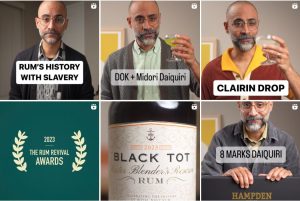
Arminder, the gent behind Rum Revival, (c) Rum Revival Instagram feed
Online Resources
If you were to consider only website-based reviewers you might think the writing gig is one of diminishing interest and output. I have come to the realisation that this is not so, it’s just that the format and platform and methodology has changed. The rum writing and reviewing game is as vibrant as ever, one only has to look elsewhere.
Some years ago I commented on my dissatisfaction with the increasing prevalence of the “short form” review model (you could argue Serge Valentin popularised if not actually created it), whereby quick, tasty little McNuggets of reviews are written, tasting notes are briskly and succinctly provided and a score assigned. I felt – then and to some extent now – that bereft of context and without placing of a rum in its larger universe, with no provision of some historical or other background, such reviews may be quick to write and lend themselves to building a fast library of tasting notes, but are not always as valuable in the long term. However, in all the ensuing years, the trend has continued and it’s time to stop whining and simply accept that this is the way the world now consumes information. And indeed some of these little reviews, which are almost always platform-based on Instagram, TikTok, YouTube or even FB, are pretty good, with the subreddit /r/rum being the best of them all, and Instagram coming right behind it.
It’s not just written micro-reviews either. Other formats are becoming more prevalent. A new short-form video reviewer I like, Arminder Randhawa, started his Instagram feed and YouTube channel “Rum Revival” in 2022; and 2023 is when he really picked up a head of steam and became much more well known. I met him at TWE Rumshow in July and he’s pretty much the same as he is in his videos: fun, pleasant, engaging. In his videos he is crisp, informative and has good editing chops – his presentations really move along and unlike some others, eschew gimmickry, stay resolutely focused and on point which is why he can get away with very short ones.
Older stalwarts like Steve the Barman (on YouTube) remain fixtures on the video scene and almost makes me want to try a spiced rum on occasion (he lives in hope). His philosophy is simply that somebody needs to talk about these bottom feeders as well and so he does it, with a blend of enthusiasm and fast talk that is really fun to watch. He has not changed my mind so far, but then, he doesn’t need to. And a hat tip to Ready Set Rum in the USA who has much fun with his friends and rums as he ever did. All three of these made the Rum Raiders “Five Most Influential Rum YouTube Channels of 2023” list – along with Nia of My Rum Diaries and the duo of Roger and Robert of Just Drinking.
 In any event, what I did not see as clearly then but which has slowly come into focus, is that such visual or short form reviews are part of the third internet generation of creative endeavour. This is a generation of creatives which moves a lot faster, attracting a cohort of the consuming audience whose attention span is a lot shorter and probably skews younger. Thousand word essays are passe, reading is so yesterday, and it’s crisp little reviews that make up the bulk of the reviewing ecosystem these days, including the video reviews and podcasts that have become more popular, and this is where I should give a loud shout out to the pair of Will Hoekinga and John Gulla who run that always excellent biweekly podcast The RumCast, which for me is required listening even when I disagree with them. With the exception of Steve and Ralfy who are in the UK, they serve a primarily American audience (and this shows if you know what you’re looking for), but all have a reach far exceeding that and should not be ignored.
In any event, what I did not see as clearly then but which has slowly come into focus, is that such visual or short form reviews are part of the third internet generation of creative endeavour. This is a generation of creatives which moves a lot faster, attracting a cohort of the consuming audience whose attention span is a lot shorter and probably skews younger. Thousand word essays are passe, reading is so yesterday, and it’s crisp little reviews that make up the bulk of the reviewing ecosystem these days, including the video reviews and podcasts that have become more popular, and this is where I should give a loud shout out to the pair of Will Hoekinga and John Gulla who run that always excellent biweekly podcast The RumCast, which for me is required listening even when I disagree with them. With the exception of Steve and Ralfy who are in the UK, they serve a primarily American audience (and this shows if you know what you’re looking for), but all have a reach far exceeding that and should not be ignored.
A quick roundup of the others around the world: the UK rum reviewing scene has tilted and the three long time resources of Rum Diaries Blog, Rumshop Boy and The Fat Rum Pirate have ceased writing. They remain active on social media and the general rum community but hardly review any longer. Into their place have stepped others. Alex of the Rum Barrel is one of the best: he is a bartender at Trailer Happiness and you sort of wonder where he finds the time to be so prolific; his UK rum distillery tour is an example of the passion and breadth he brings to the subject. Another is Stuart, who runs the Secret Rum Bar and is a short form multi-bottle reviewer in the vein of Single Cask Rum and WhiskyFun. He takes horizontal or vertical tastings as his schtick, and it’s always a good read. Sandor over in Hungary must come in for mention, as he is a long form writer who writes in Hungarian and one of a kind over there, single handedly fighting to get rum some recognition in Eastern Europe. 88 Bamboo represents Asia in fine style and I look forward to the day I can meet their editorial and writing team. Nothing in Australia that I know of (which remains a shame), and Africa and South America remain silent (or at least unknown to me). In the USA, it’s mostly rum clubs (like Austin or Memphis) and reddit contributors with ancillary websites that churn out content these days, and none have made a larger impact outside their region so far as I can tell, though I usually read them all.
 The Soapbox Commentary Section
The Soapbox Commentary Section
It was with some relief that I observed that to some extent, the vituperation that so characterised 2019-2021 online discourse died down — at least a bit — as COVID receded and the great social movements the world experienced took a break, as they inevitably do – until the next crisis.
But by no means are any of the issues gone: they’re sleeping, not dead and it seems like people just need something to get them fired up when things gets too quiet. Dosing and disclosure remain on the docket and reliably come up for rancorous discussion every few months on some platform or the other. A fair amount of people who regularly dive into this subject cheered when another lawsuit was filed against a multinational for bad label design related to its ageing, without ever bothering to actually check what the laws really require and what will very likely happen (which is nothing).
The Ministry of Rum FB group, one of the largest social media rum clubs, became a cause célèbre for a while. The issues that got people sharpening their digital codpieces were a combination of a change in the ethos of the group (to a less adversarial, more inclusive — but also more dollar-centric and monetised — track), the treatment of existing mods/admins, and the seemingly arbitrary removal or banning of those who posted controversial opinions and commentary, without warning. This flashed in the pan until those who it affected (unsurprisingly, this was mostly the same ones who comment the most about all the usual flashpoints) departed the group en masse and immediately found more congenial FB homes. I genuinely didn’t approve (or see the point) of either side’s high handed actions given how many options each had, but there’s no question that the cesspit that the MoR had become is much less brutal now…at the expense of a certain Darwinian character it once held. Not everyone appreciates the change, probably because there are now limits where before there had been none.
 The long standing issue of the Barbados and Jamaica GI remains unresolved, and continues to elevate rhetoric and blood pressures in equal measure, even as the spillover to MF / Plantation continues apace on social media. I find nothing but a raging desire to be right, to shut down dissent, and to target favoured enemies in petty vendettas in most of these posts, and have almost completely disengaged from any discussions on the subject, or even reading them, because how many times do you have to hear “Plantation is sh*t” before you get it? The GI is of great importance and I’m personally behind a strong version endorsed by Foursquare, SNA and Mount Gay (the most recent version of which most commentators have never read), but I argue that the lack of tolerance, the inability to be reasonable, to see points of view other than one’s own, has done more to hurt the case than help it. I simply cannot understand — and will never accept — the constant hate and personal attacks promulgated by a pompous commentariat who have no skin in the game but are somehow okay with telling everyone else what to think and drink (or what not to). And this is why thoughtful people simply sign off from getting involved, which is to everyone’s detriment. Moreover, I am convinced that it’s just a matter of time before one of these flame wars gets physical, and when (not if) it happens, you can be sure that the loudest voices who make the environment so toxic will never take any blame for inciting it. It’s a measure of how deeply this issue and the self-censorship it engenders has become embedded in the rum ecosystem, that I rewrote this one paragraph six times and pruned it savagely (it’s a summary of a much longer unpublished opinion piece), and even now I’m leery about the reaction it will inevitably provoke. But it has to be said and someone has to come straight out and say it – the enmity that people provoke and promote with their intractable trolling does our world no service, because like it or not, Plantation is not going anywhere and the GI is not in our hands…so all that spilled digital ink is accomplishing nothing positive at all. It’s time to take a step back and calm down.
The long standing issue of the Barbados and Jamaica GI remains unresolved, and continues to elevate rhetoric and blood pressures in equal measure, even as the spillover to MF / Plantation continues apace on social media. I find nothing but a raging desire to be right, to shut down dissent, and to target favoured enemies in petty vendettas in most of these posts, and have almost completely disengaged from any discussions on the subject, or even reading them, because how many times do you have to hear “Plantation is sh*t” before you get it? The GI is of great importance and I’m personally behind a strong version endorsed by Foursquare, SNA and Mount Gay (the most recent version of which most commentators have never read), but I argue that the lack of tolerance, the inability to be reasonable, to see points of view other than one’s own, has done more to hurt the case than help it. I simply cannot understand — and will never accept — the constant hate and personal attacks promulgated by a pompous commentariat who have no skin in the game but are somehow okay with telling everyone else what to think and drink (or what not to). And this is why thoughtful people simply sign off from getting involved, which is to everyone’s detriment. Moreover, I am convinced that it’s just a matter of time before one of these flame wars gets physical, and when (not if) it happens, you can be sure that the loudest voices who make the environment so toxic will never take any blame for inciting it. It’s a measure of how deeply this issue and the self-censorship it engenders has become embedded in the rum ecosystem, that I rewrote this one paragraph six times and pruned it savagely (it’s a summary of a much longer unpublished opinion piece), and even now I’m leery about the reaction it will inevitably provoke. But it has to be said and someone has to come straight out and say it – the enmity that people provoke and promote with their intractable trolling does our world no service, because like it or not, Plantation is not going anywhere and the GI is not in our hands…so all that spilled digital ink is accomplishing nothing positive at all. It’s time to take a step back and calm down.
Favourite Reviews / Articles of 2022
As I said, my output decreased somewhat with respect to the essays and commentaries and company biographies but here are some that managed to stand out, even if only in my personal opinion:
- A user on reddit asked about my tasting methods when there are loads of samples to go through, so I wrote him an extended explanatory reply.
- An extended opinion on the background surrounding the Tamosi “Kanaima” rum formed an addendum to the review which I think was a useful correction and counterweight to the vitriol that had attended the release of the rum a few years ago (which many forgot about, but I didn’t). It just goes to show how much savage commentary is driven by feelings, ego and a desire to be heard rather than anything more thoughtful or knowledgeable.
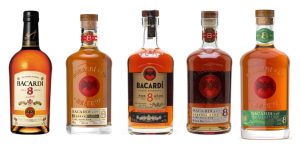 Only two Key Rums articles went up this year (although there is material for more to come) – the Bacardi “Ocho” and the Plantation OFTD, the latter of which was posted with some trepidation (see Soapbox, above), but which was received reasonably well.
Only two Key Rums articles went up this year (although there is material for more to come) – the Bacardi “Ocho” and the Plantation OFTD, the latter of which was posted with some trepidation (see Soapbox, above), but which was received reasonably well.- The Sugar House Overproof rum review was a cheerful look at a masterful unaged rum from one of the New Brits which impressed me to the tune of 90 points. I had similar fun with L’Espirit’s “still strength” unaged MPM rum from Guyana and reread it every now and then for a laugh. Similarly, I enjoyed writing about the Outlier Distillery’s impressive “Hurricane” rum which was bottled at a growly 64% and had taste chops to die for, which was almost matched by the Bundie Overproof.
- A small series of Rumaniacs reviews of older Bacardis is useful for the window they open into the past — R149 – R154
- Review #1,000 must come in for mention here as I spent a lot of time researching it and even more drinking it. It’s one of the most magnificent rums I’ve ever tried, both for taste and for heritage.
Best Rums Tasted During the Year
As before I decided to stick with the Rumcast’s simple categorization (more or less) otherwise this post (already overlong) would become unmanageable. Even within that restriction, it’s really kind of amazing how many fantastic rums crowded into my sightline this year, whether through tastings, festivals, the generosity of friends or simple happenstance (“Oys!! You gotta try dis ting, mon!”). I remain grateful and enriched by the sheer variety I was able to try…which, in 2023, numbered more than 200.
 Unaged Rum
Unaged Rum
It’s not that I didn’t try more unaged rums than this small list suggests, it’s just that overall they were good but not always exceptional. I could just as easily have added a Savanna or three, and several more from Australia and the UK. These however, were the ones that stood out to me, and for my money, that HSE was simply the very best of a really strong field with the stunning Islay Rum Distillery Uine Mhor coming a close second. I should have bought myself a bottle, honestly.
Aged Rum (5 years or less)
- JM VSOP 4YO 43% (Martinique)
- Rom Deluxe STCHE 2019 3YO Longpond (Denmark/Jamaica) 69.6%
- Chalong Bay Double Barrel 2YO 47% (Thailand)
- TBRC Black Gate Australian Rum 3YO 57.2% (UK/Australia)
- Hampden DOK 2017 5YO 64.6% (Jamaica)
- Ninefold Distillery Watson’s Reserve 3YO No.1 59% (UK)
- Renaissance Rums, Taiwan
Australia, Martinique, Jamaica, UK, Thailand, Taiwan…how to chose from such a cornucopia? I almost hate to narrow things down to just one, because all entrants were uniformly lovely and showcased so much variety. But this year, I want to give the blue ribbon to Renaissance for sheer overall excellence, even if the others were right there alongside it.
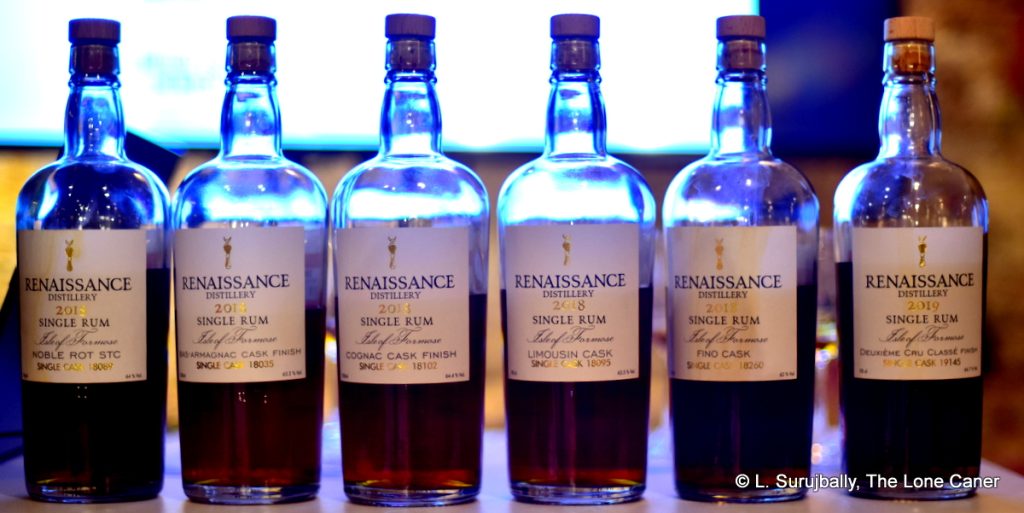
Aged rum (Over 5 years)
- Rum Club No. 40 Beenleigh 2007 64.8% (Germany/Australia)
- Appleton Hearts 3rd Edition 1993 63%(Jamaica)
- Foursquare-Velier Raconteur 61% (Barbados)
- TBRC Mount Uncle 12 YO Rum 64.9% (Australia)
- Homes Cay Barbados 2002 20YO Pot still 51.1% (USA/Barbados)
- The Last Drop Distillers 1976 44YO Rum 68.5% (UK/Jamaica)
- Havana Club 11YO 50% (TWE Special Release)(Cuba)
 It almost seems like blasphemy to pass by a magnificent Mount Uncle rum, a 20 YO Foursquare pot still, or one of the Appleton Hearts, yet I think from my own review notes, I have to award my best aged rum to the Last Drop 1976. For those who want to have a nomination and award given to something they might actually get to try one day, I’m going to have to say Raconteur was surely a well deserved #2, though I emphasise how strong the entire field is, and that none would be a fail under any circumstances.
It almost seems like blasphemy to pass by a magnificent Mount Uncle rum, a 20 YO Foursquare pot still, or one of the Appleton Hearts, yet I think from my own review notes, I have to award my best aged rum to the Last Drop 1976. For those who want to have a nomination and award given to something they might actually get to try one day, I’m going to have to say Raconteur was surely a well deserved #2, though I emphasise how strong the entire field is, and that none would be a fail under any circumstances.
“New to me” rum
 Honestly, my love is given to this section because this is where rums that don’t always score well — some do, some don’t — but which have a certain something to them, get to shine and show their chops and be recognized. This year India (or Indian style) had a moment, the New Brits were kicking ass and taking names, and the Philippines’ Luisita deserves serious praise for getting out from under the shadow of Don Papa and somewhat redeeming the honour of the Philippines. Yet, I want to acknowledge Canada’s Romero Distilling’s full proof sherry cask rum, which was by far the best Canadian rum I’ve had thus far and gives me hope that this non traditional region of rum making will rise up and be counted in the years to come.
Honestly, my love is given to this section because this is where rums that don’t always score well — some do, some don’t — but which have a certain something to them, get to shine and show their chops and be recognized. This year India (or Indian style) had a moment, the New Brits were kicking ass and taking names, and the Philippines’ Luisita deserves serious praise for getting out from under the shadow of Don Papa and somewhat redeeming the honour of the Philippines. Yet, I want to acknowledge Canada’s Romero Distilling’s full proof sherry cask rum, which was by far the best Canadian rum I’ve had thus far and gives me hope that this non traditional region of rum making will rise up and be counted in the years to come.
Most Surprising Rum, aka “AITA for liking it?” Award
Here’s a section that keeps me honest, because they are rums where I had to exercise serious effort not to prejudge. Romero’s Amber and Dark rums did not impress which made their Cask Strength rum so much more impressive; everyone hates on Bundie (not the least in Australia) yet their overproof presented as not half bad. I walked into Cargo Cult not expecting a whole lot and walked back out again really impressed and listening to Steve Magarry snicker. And of course people do know of my general indifference to Doorly’s…so how amazing is it that I really enjoyed not one of their really old expressions but their barely-out-of-diapers 3YO? In this category, I just have to give it to Havana Club though, because normally I’m not a great fan of the Latin / Cuban rum style: however, their 11YO was so solid and well assembled, pipped the 15 YO so easily (which I didn’t think that was possible), that I could not ignore it. What a lovely dram indeed.
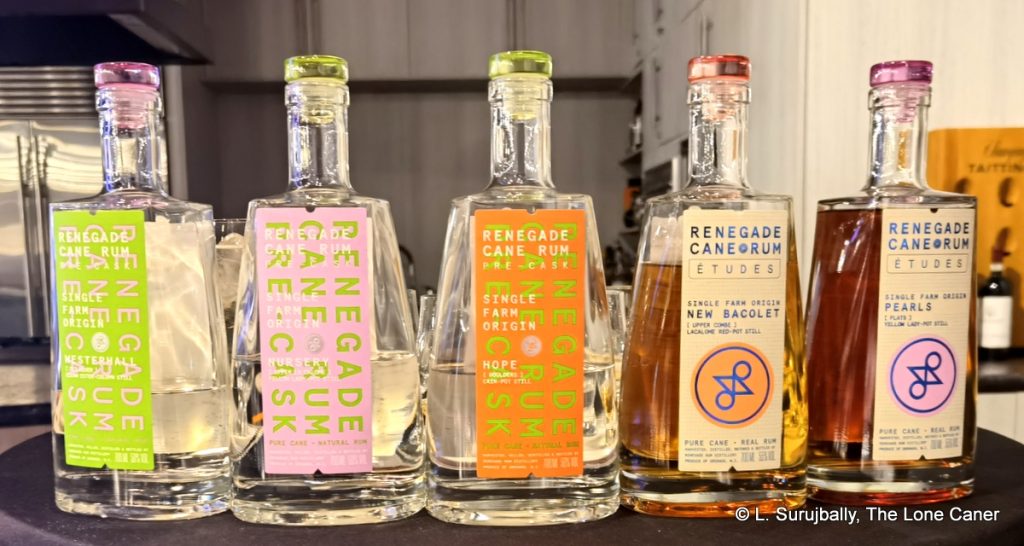
(Really) Honourable mentions
- Isautier Agent Double 01 and 02 (Reunion)
- Foursquare Touchstone (Barbados)
- The New Renegade Pre-cask / Aged Series (Grenada)
- The new ED cask strength series 2009 (PM and ENM)(Guyana)
- Naga Rums (Indonesia)
- Ninefold Distillery’s rums from the UK
- Worthy Park 2015-2020 5 YO Canadian Only Edition 68% (Jamaica)
- English Harbour High Congener Series 2014 6 YO 63.8% (Antigua)
These not-quite-there-by-a-nose rums are those that scored just a smidgen below the threshold I would use to bring anything into these categories, but were somehow good enough, memorable enough, that I want to call some attention to them irrespective. Isautier’s duo of cane juice and molasses based rums ensorcelled me, and the Naga rums from Indonesia weren’t of the best but unique and special even so. Ninefold just keeps on getting better every damned year and it’s tough to pick a fave so I chose the lot. Touchstone from Foursquare was really quite lovely (as most of the ECS range is), and I remain chuffed by what El Dorado has done after giving up on the Rares, and folding its limited edition aged caskers into the regular portfolio. Worthy Park and English Harbour are perennially high quality hooches, with some exceptional outturns found this year. Here though, the pride of place must go to Renegade’s precask line and also their young aged rums, most particularly the Pearls, which really was a sublime little rumlet, for something so young.
Overall best
 I doubt it’s a secret that of all the rums I tried this year, that Last Drops 1976 took home the crown, and right behind it came the Cadenhead TDL 19YO which I still suspect has a smidgen of Caroni in it (unproven, but…). So that’s number 1 and 2, yet they are so unavailable it almost seems like a cheat to name them to the pantheon at all, because, what’s the point for regular rum folks? With that in mind, I reread my notes, rechecked my scores, revisited my memories, and decided that among all these really fantastic rums, this year I have to declare a tie between the Killik Handcrafted and the Black Tot 50th Anniversary because they were both original, stunning, tasty and unique rums that took rums to another level. But again, I cannot emphasise enough that any of the rums on this list is worth looking for and trying, if you can. I hope you do.
I doubt it’s a secret that of all the rums I tried this year, that Last Drops 1976 took home the crown, and right behind it came the Cadenhead TDL 19YO which I still suspect has a smidgen of Caroni in it (unproven, but…). So that’s number 1 and 2, yet they are so unavailable it almost seems like a cheat to name them to the pantheon at all, because, what’s the point for regular rum folks? With that in mind, I reread my notes, rechecked my scores, revisited my memories, and decided that among all these really fantastic rums, this year I have to declare a tie between the Killik Handcrafted and the Black Tot 50th Anniversary because they were both original, stunning, tasty and unique rums that took rums to another level. But again, I cannot emphasise enough that any of the rums on this list is worth looking for and trying, if you can. I hope you do.
So, once again, there you have an example of my inability to make a top three listing that summarises an entire year of writing, thinking, tasting and reviewing. I hope you find it useful and enjoy your drinking, because I certainly did, and with that, I close this overlong annual review, except for one last section which I too often leave out.
Acknowledgments
No such wrap up would be complete without some words of appreciation, since the effort is never entirely solo and many people are involved in what I do. First and foremost, Mrs. Caner who has and always has had, my back, and in turn, my love. She allows me the time to think and write, and acts as a valued counsellor, especially when I’m angry. She sniffs and mutters dark imprecations about the Prada purses she isn’t getting because of my mad pursuit of the next rum, the next festival, the next meet-up…but I know she supports me in all I do, and once in a while might be persuaded to give a grudging compliment, especially if she gets to stow away on a trip to Paris in exchange.
Gregers in Denmark, thanks for all your help, and your friendship; Matt, our back and forth commentary always enriches the narrative. To Steve Magarry who once endured me babbling away for two hours in a Moroccan cafe on a Sunday morning before escaping on a flight back home, to Mr & Mrs Rum who put together those advent calendars that introduced us all to Oz, and the entire Australian and New Zealand rum community who have been so helpful and generous with your time – I’m deeply grateful to you all. Dawn Davies, you’re great, appreciate everything – still owe you a dinner sometime. Steve the Barman, Keegan, Jazz and Indy, well, what can I say, it’s always fun to hang out with you dodgy lot. For the Canadians, my appreciation goes to Dwayne in Sask (originator of the famed Conjecture), Karl of Bira! in BC, Logan, Carter, and Neil in Calgary, the KWM folks — Shawn, Curt, Andrew — who always squirrel away some of the good stuff, or find me the last seat in a tasting; and Robin in TO as always. Tips of the trilby must also go to all those people who lend quiet assistance or act as sounding boards, without recompense or mention: CityBarman, John Go, Richard Seale, Sean Caleb, Christelle Harris, Will and John of Rumcast and many more.
This is a lot, but yet, and yet…one more specific person deserves mention and must not only be thanked, but saluted: the badass, cocktail-sipping Teutonic marvel with more pizzazz then the Energizer Bunny, able to leap pallets of rums and cringing reviewers in a single bound, the indomitable, pragmatic, helpful and supportive, one and only Grandma Caner. If Mrs. Caner gave moral and personal support, Grandma Caner was the one who enabled the infrastructure. For the decade I was in the Middle East, the woman patiently gave up her basement to my rum purchases, rented storage, unpacked boxes, cleared my extravagant buys through customs or the post office, and sometimes fetched them home in her bicycle panier – in summer or winter, rain, snow or shine like a one-grandma Pony Express. Her small apartment was the site of the famed Caner Afterparties, and she took time and money to help me maintain a foothold on the rum scene wherever it was happening. She gets too little thanks in these pages, but she’s amazing, the greatest Mom I know, and there’s a bunch of people who’ve met her over the years who think the same.
And lastly, my personal thanks and heartfelt appreciation goes to all the very many rum loving individuals who read my work, occasionally leave a comment, and in all ways provide impetus for the project to continue. It would not be the same without all of you. Thanks again, and have a great 2024!
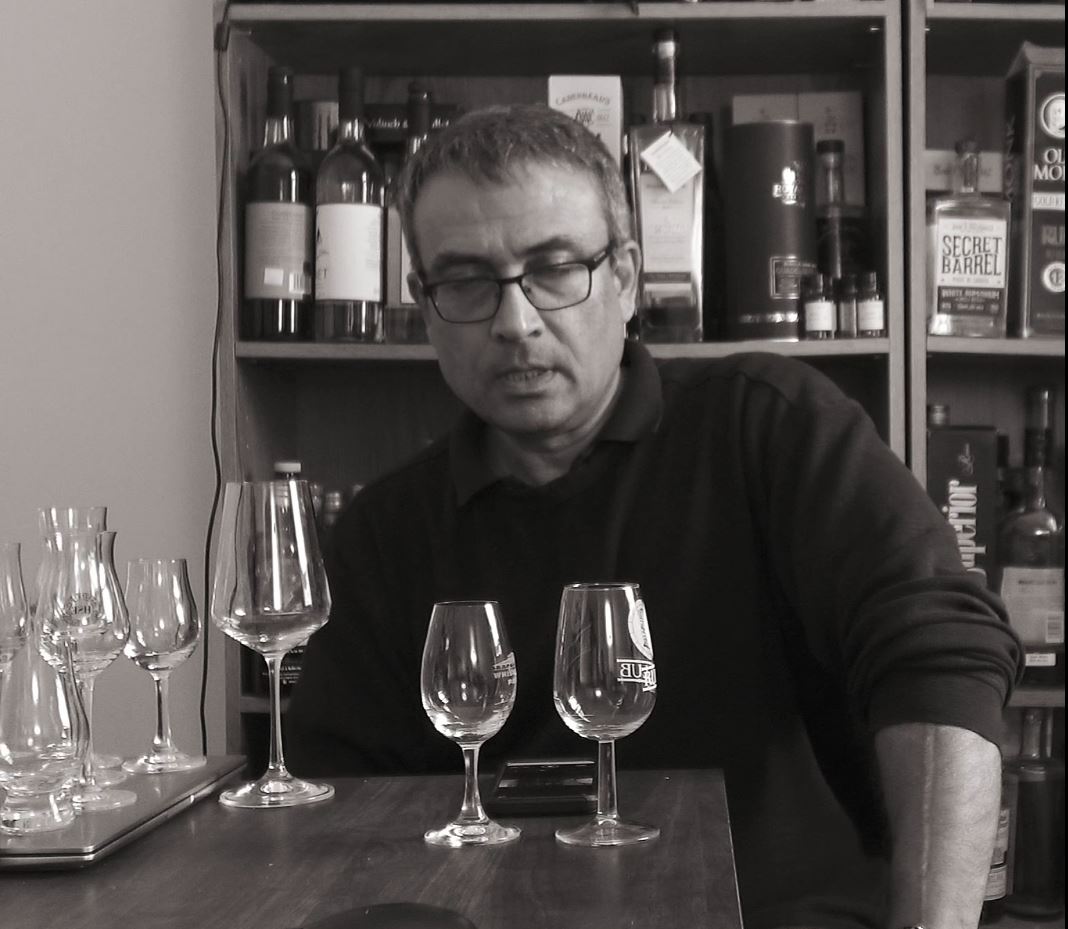

















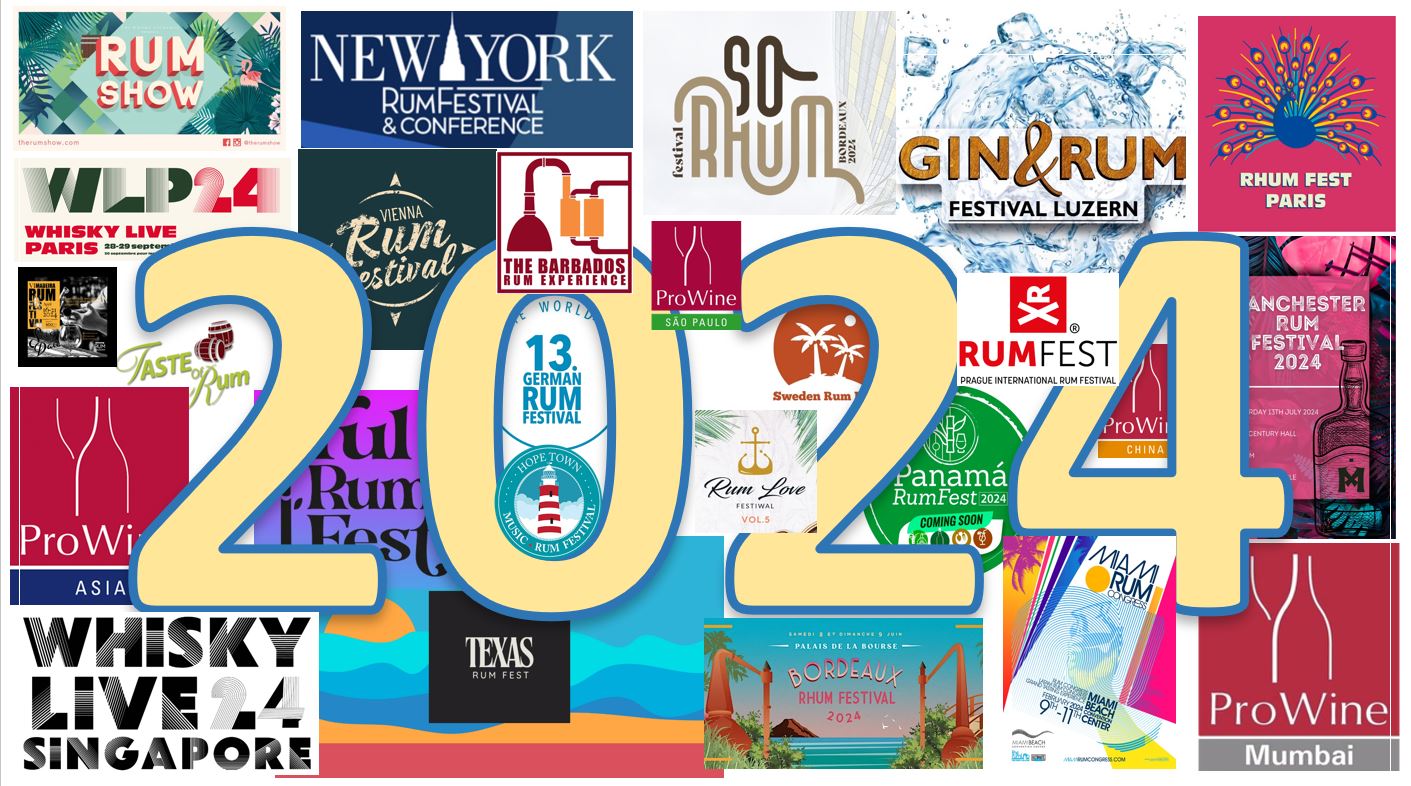
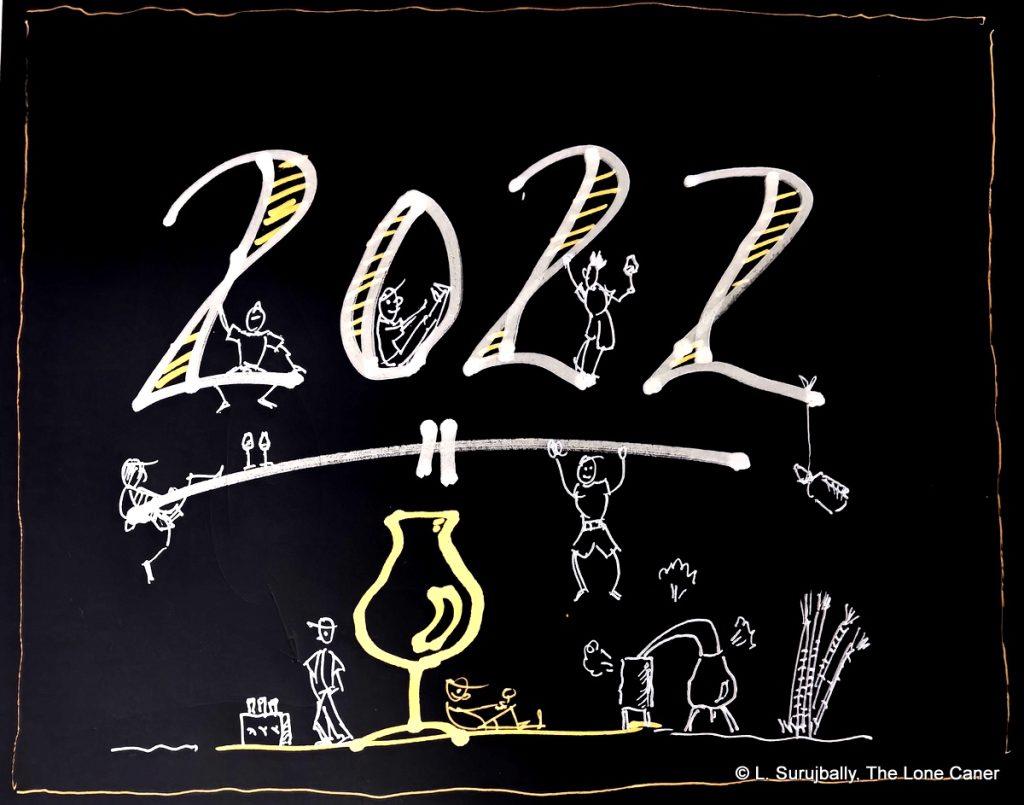
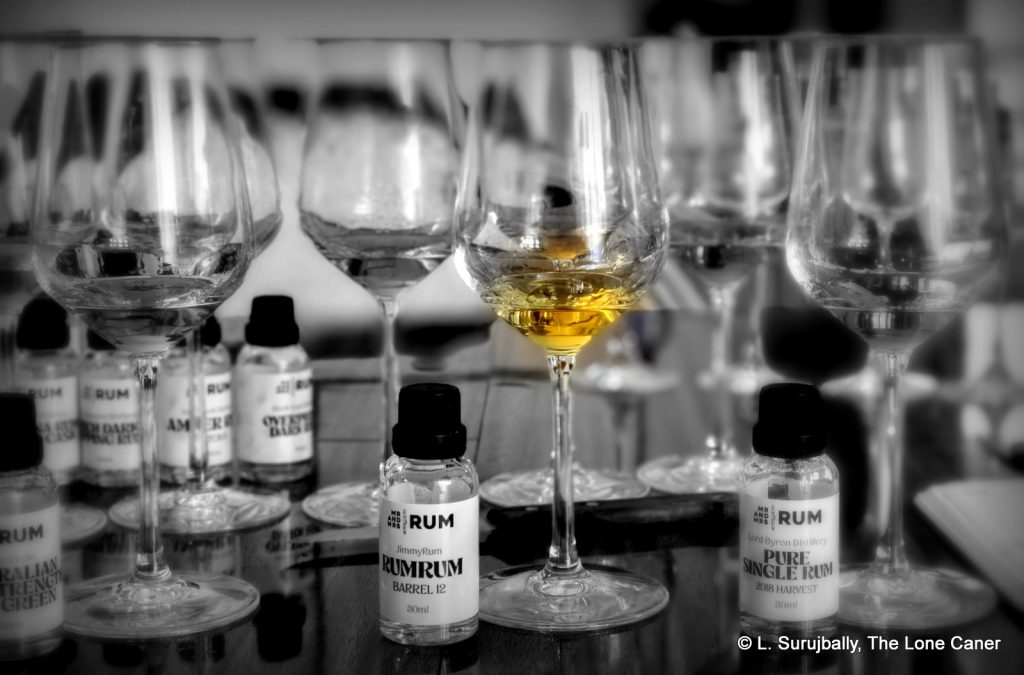
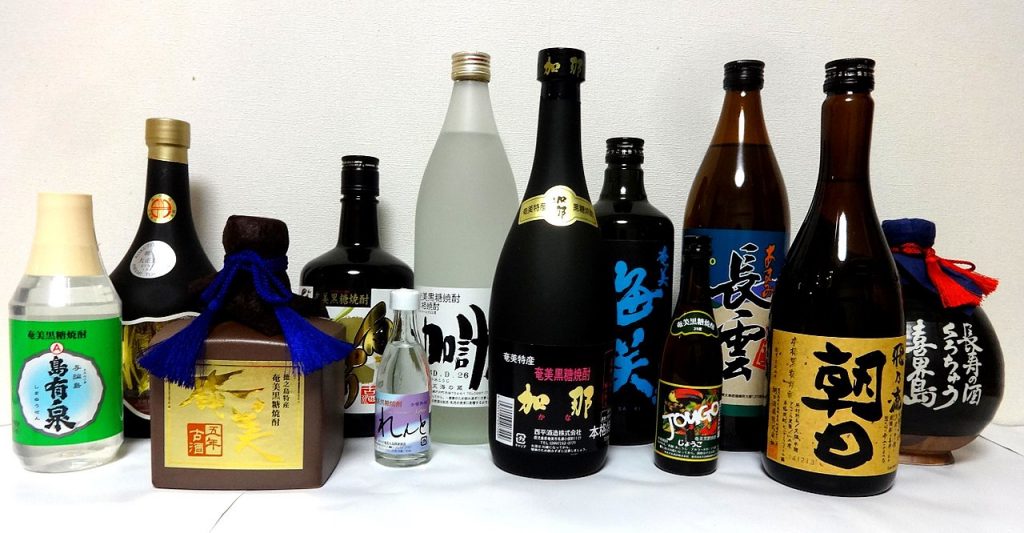
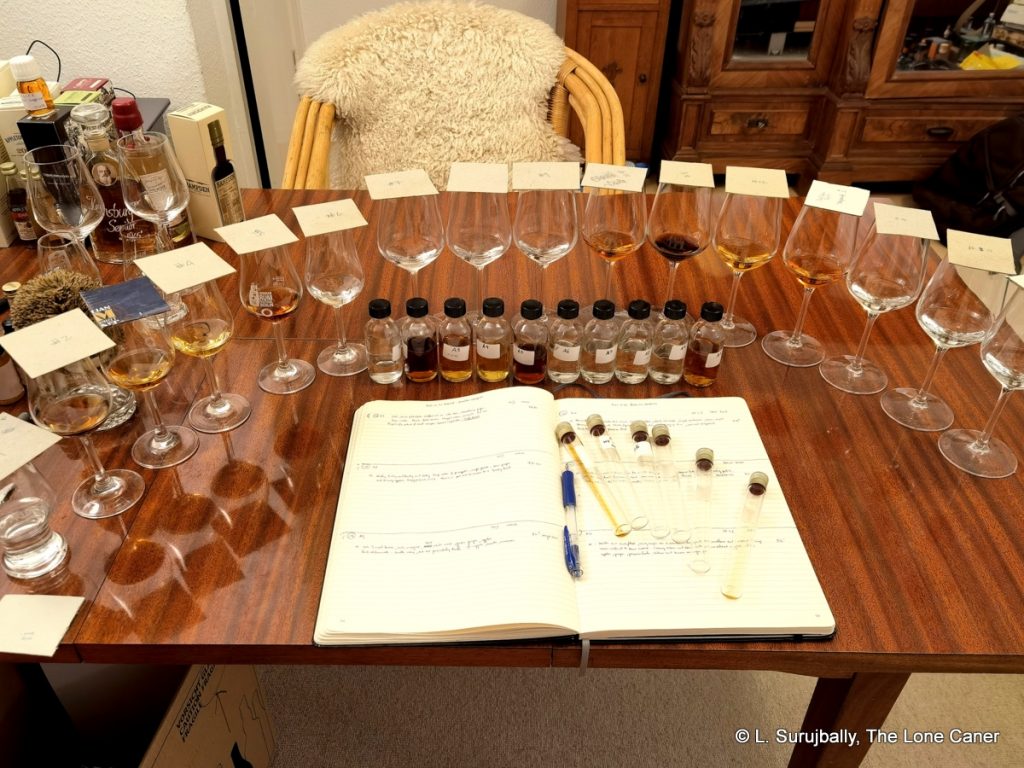


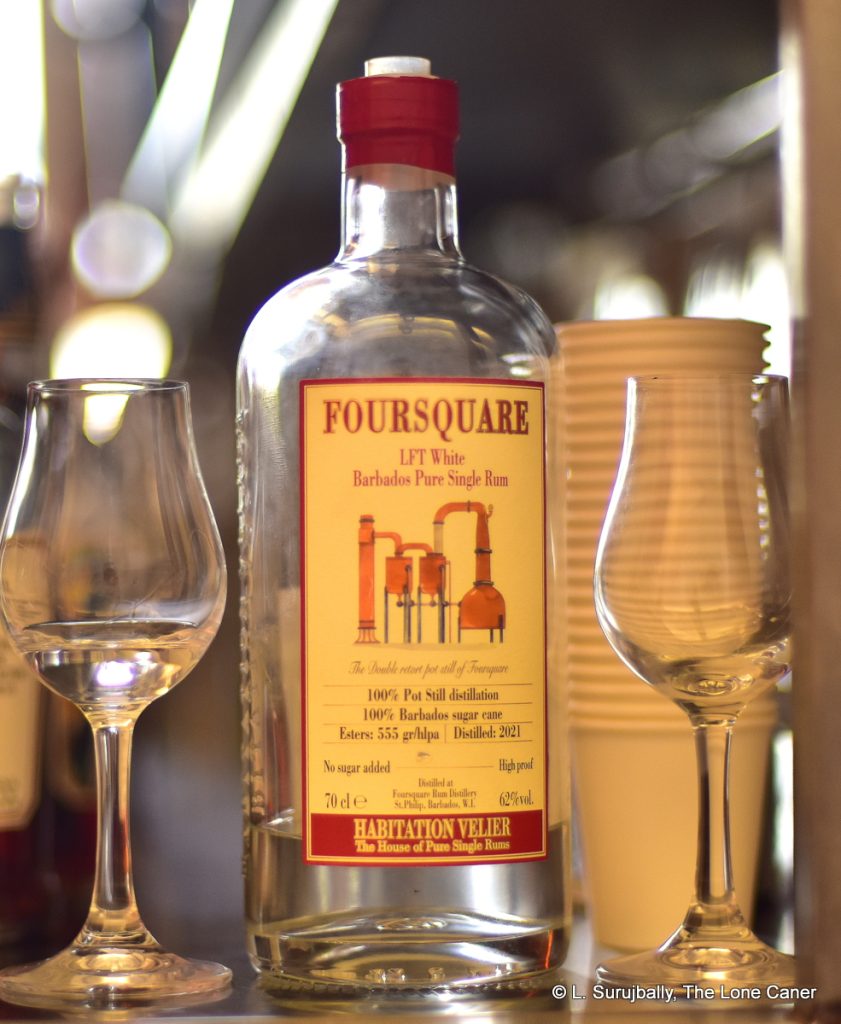
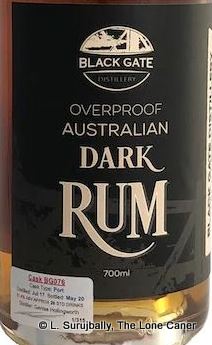
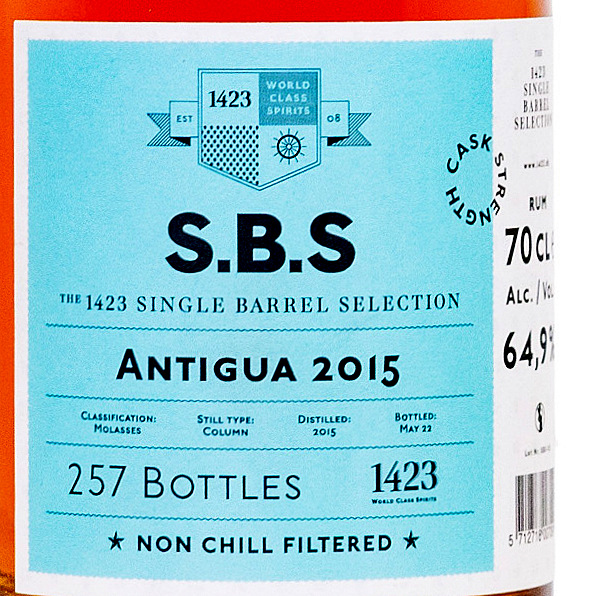
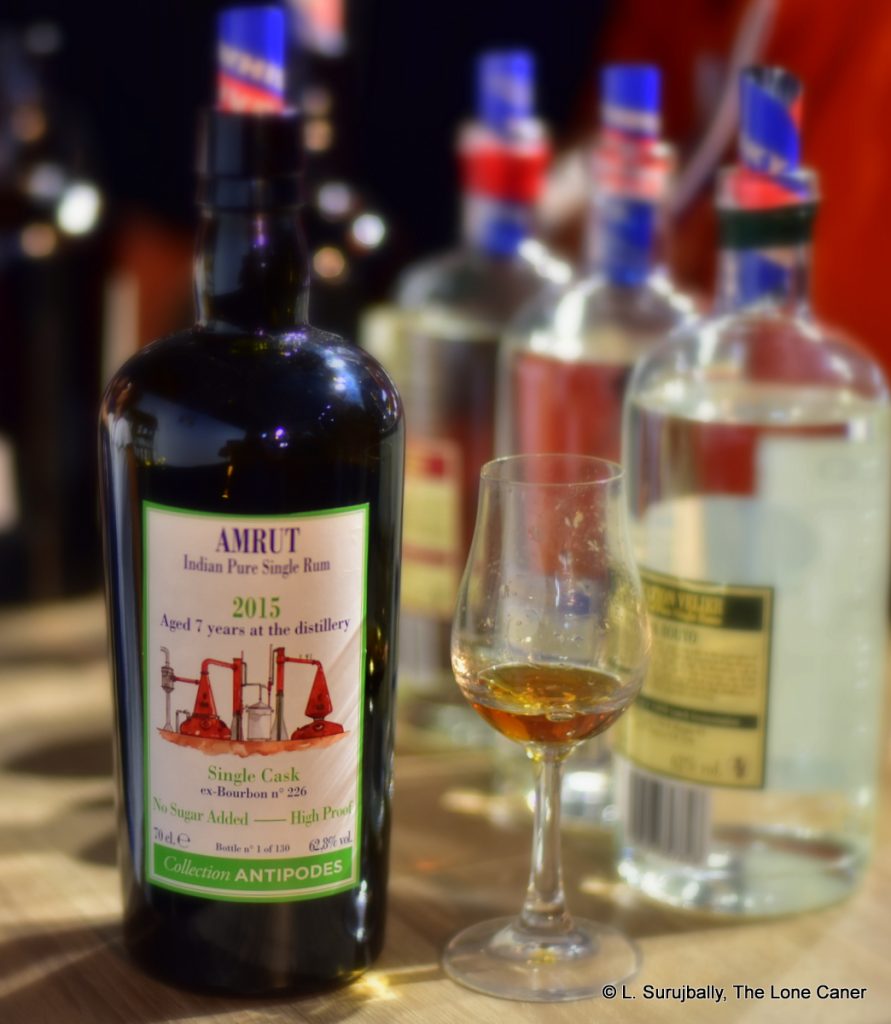
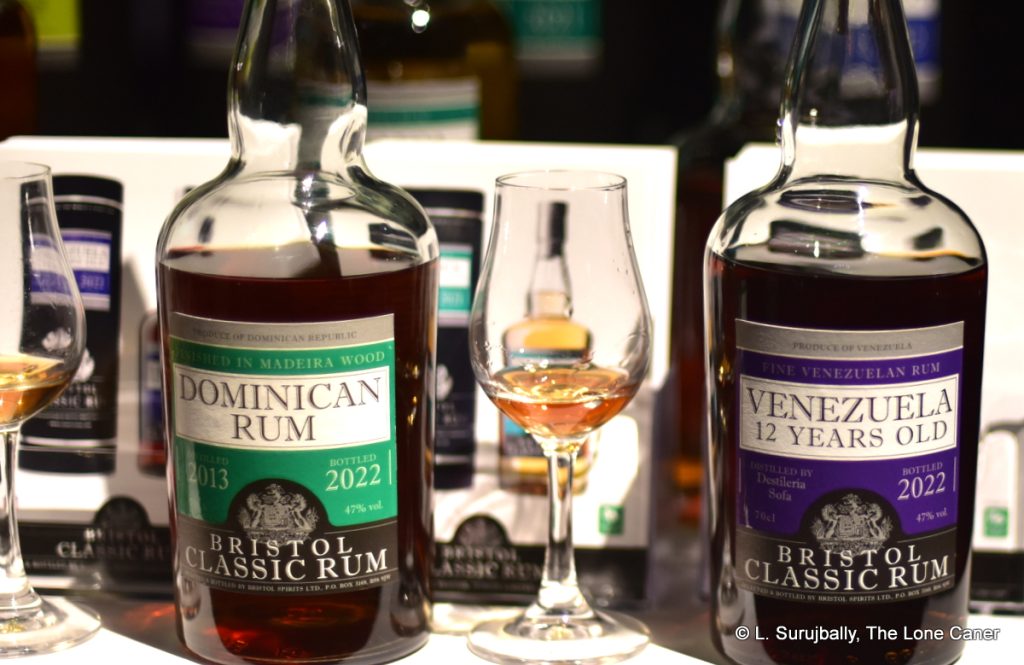
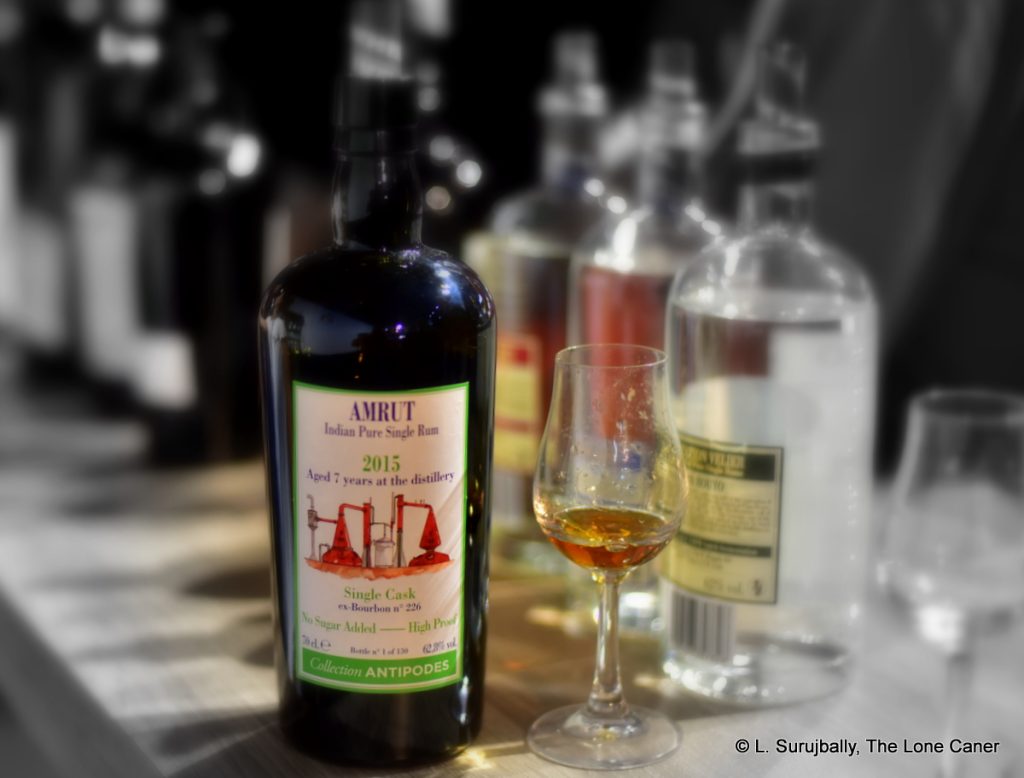
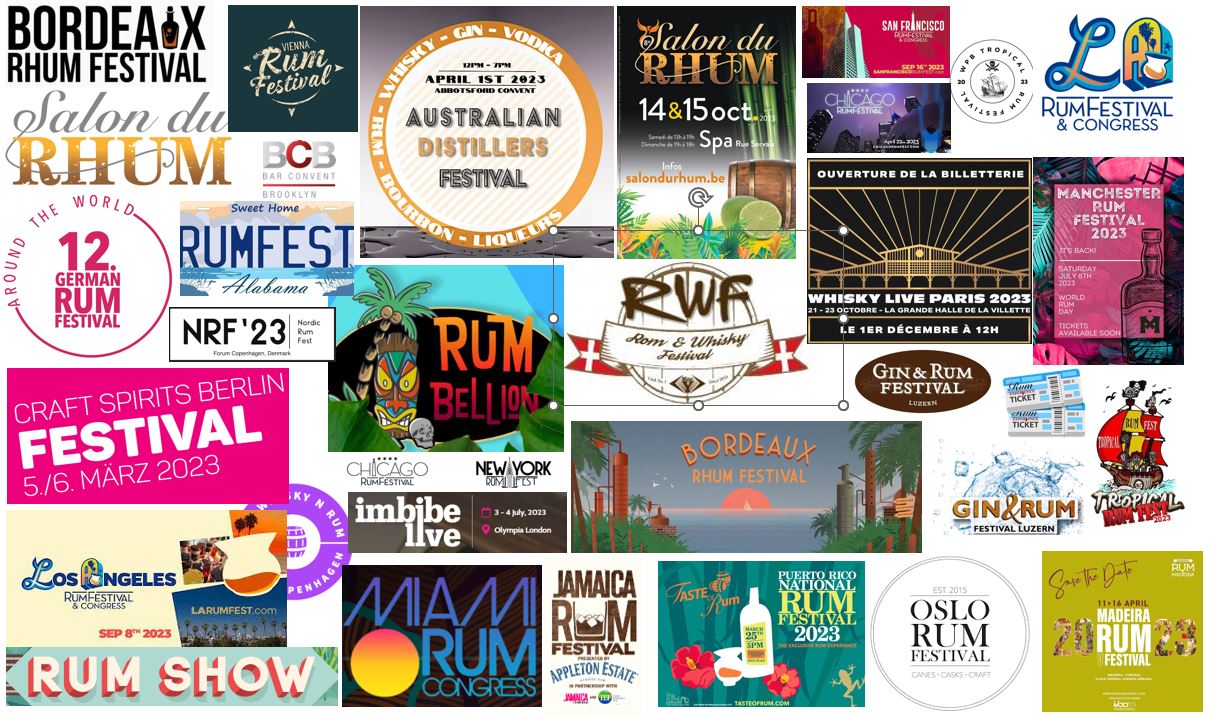

 The “ancillary sessions” I refer to above are almost always seminars and masterclasses and if you’re wondering, a seminar is an informative get together for anyone who’s interested with maybe a tasting tacked on, while a masterclass is exactly what it describes. This is why when Richard Seale goes into the technical details of the endochronic properties of resublimated thiotimoline it’s a masterclass (and usually leads to a thundering stampede for the exits five minutes in), while a run-through of six agricole rhums by a distributor is closer to a seminar.
The “ancillary sessions” I refer to above are almost always seminars and masterclasses and if you’re wondering, a seminar is an informative get together for anyone who’s interested with maybe a tasting tacked on, while a masterclass is exactly what it describes. This is why when Richard Seale goes into the technical details of the endochronic properties of resublimated thiotimoline it’s a masterclass (and usually leads to a thundering stampede for the exits five minutes in), while a run-through of six agricole rhums by a distributor is closer to a seminar.
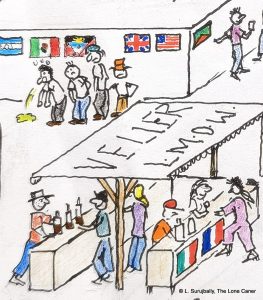 Thirdly, as noted above, unless you’re okay with simply wandering around, talking to people and randomly stopping wherever it suits you, it is a good idea to know which
Thirdly, as noted above, unless you’re okay with simply wandering around, talking to people and randomly stopping wherever it suits you, it is a good idea to know which 
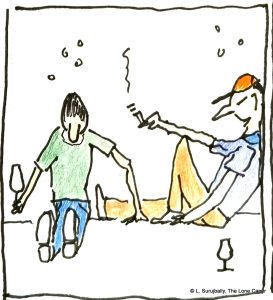 Once at the festival itself, one of the most important things to always keep in mind is that you will be there for a few hours at the very least (my personal record is seven) and be tasting a lot of rums, very quickly. Palate fatigue is a real thing, and so is intoxication, both of which derail the experience. Therefore, take it easy, take your time, and most of all, take small sips, and nose more than taste.
Once at the festival itself, one of the most important things to always keep in mind is that you will be there for a few hours at the very least (my personal record is seven) and be tasting a lot of rums, very quickly. Palate fatigue is a real thing, and so is intoxication, both of which derail the experience. Therefore, take it easy, take your time, and most of all, take small sips, and nose more than taste. 

